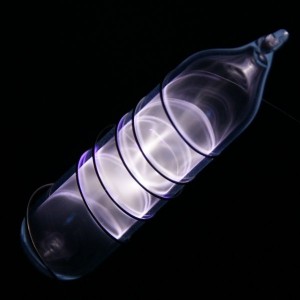

Results of the discovery are being published this week in the Proceedings of the National Academy of Sciences. ISBN 0-8493-0464-4.The ability to discover ancient ice is critical, the researchers say, because it will allow them to reconstruct the climate much farther back into Earth's history and potentially understand the mechanisms that have triggered the planet to shift into and out of ice ages. Boca Raton, Florida: Chemical Rubber Company Publishing. Kirk Othmer Encyclopedia of Chemical Technology. CRC Handbook of Chemistry and Physics (92nd ed.). However, the pulse is very, very brief (4 billionths of a second). A krypton-fluorine laser can produce a pulse that is more than 500 times more energetic than all of the power of the U.S.(The meter is now defined based on the speed of light.) Until 1983, the length of the meter was defined based on the wavelength of the krypton-86 orange-red spectral line.Krypton is one of the products from uranium fission.Detection of the isotope krypton-85 in the atmosphere led to the discovery of North Korean and Pakistani secret nuclear fuel reprocessing facilities.It lasts much longer in groundwater, so 81Kr can be used to date ground water that is 50,000 to 800,000 years old. Because of its low reactivity, krypton escapes from surface water.The strongest lines are yellow and green. Although ionized krypton appears white, the element has several emission spectrum lines.Magnetic Ordering: diamagnetic Atomic DataĬommon Oxidation States: Usually 0, rarely +1 or +2 Fun Krypton Facts Unstable compounds include Kr(OTeF 5) 2 and +. Polyatomic ions include ArKr +, KrH +, and possibly KrXe +. Krypton hydride (Kr(H 2) 4) crystals grow under pressures greater than 5 GPa. The most important krypton compound is krypton difluoride (KrF 2), which is used in a krypton fluoride laser. Krypton and other noble gases are nearly inert, but they can form compounds under certain conditions. SpaceX uses krypton as a propellent for the Starlink satellites. Sometimes window panes are insulated with krypton gas between the glass panes. Isotopes find use in magnetic resonance imaging (MRI), computed tomography (CT), and nuclear medicine. Electromagnetic calorimeters use liquid krypton. Krypton lasers are used in laser light shows and nuclear fusion research. Ionized krypton releases bright white light, so krypton finds use in photographic flash bulbs, fluorescent lamps, and “neon” lights. Commercially, krypton is obtain by fractional distillation of liquefied air. The abundance of krypton in the atmosphere is about 1 part per million. In other words, the element was present when the planet formed and has largely been maintained. Breathing 50% air with 50% krypton produces narcosis similar to nitrogen narcosis experienced by scuba divers at a depth of 30 m (100 ft). While considered non-toxic, the gas can act as an asphyxiant (similar to helium) and a narcotic. Krypton serves no biological role in any organism. Approximately thirty isomers and instable isotopes exist. The most abundant isotope is 84Kr, which accounts for 56.99% of the element.
Krypton uses plus#
Natural krypton consists of five stable isotopes, plus a sixth isotope ( 78Kr) that has such a long half-life (9.2×10 21 years) that it is essentially stable.

The only natural noble gas he didn’t discover was radon, but he was the first to isolate it.

Ramsay named the new element krypton from the Greek word kryptos, which means “hidden.” William Ramsay received the 1904 Nobel Prize in Chemistry for his discovery of noble gases and their place on the periodic table. The same method led to the discovery of neon, argon, and xenon. They isolated the element from residue remaining after evaporating other components of liquid air. William Ramsay and his assistant Morris Travers discovered krypton in 1898 (Britain). (photo: Jurii, CC 3.0) History of Discovery Name Origin: Greek kryptos: hidden White krypton glow in an electric field. Electron Configuration: 3d 10 4s 2 4p 6ĭiscovery: William Ramsay and Morris Travers (1898)


 0 kommentar(er)
0 kommentar(er)
